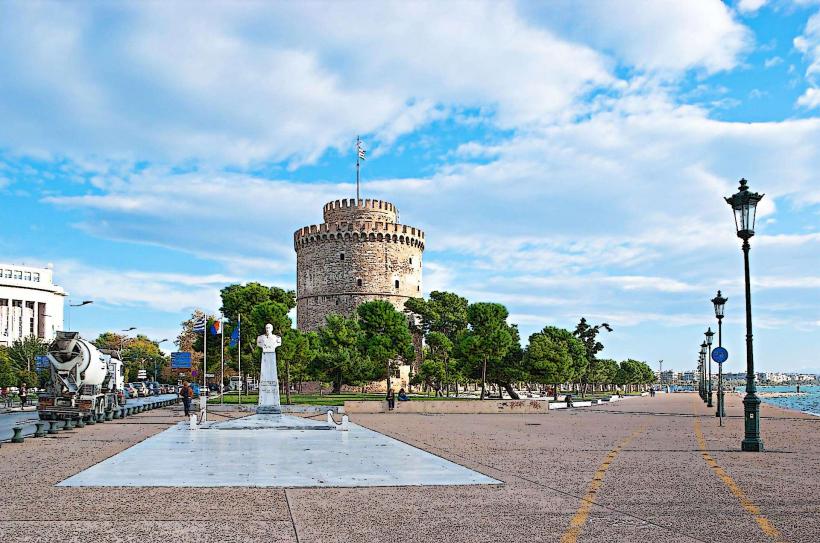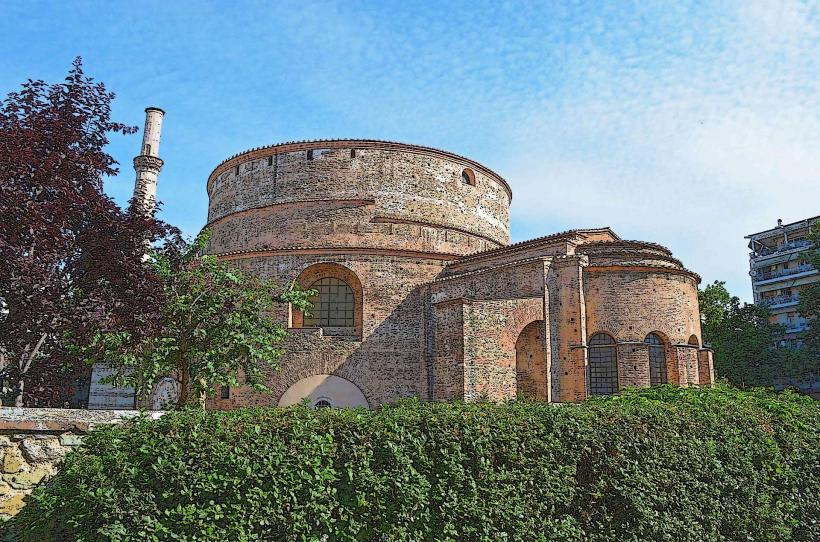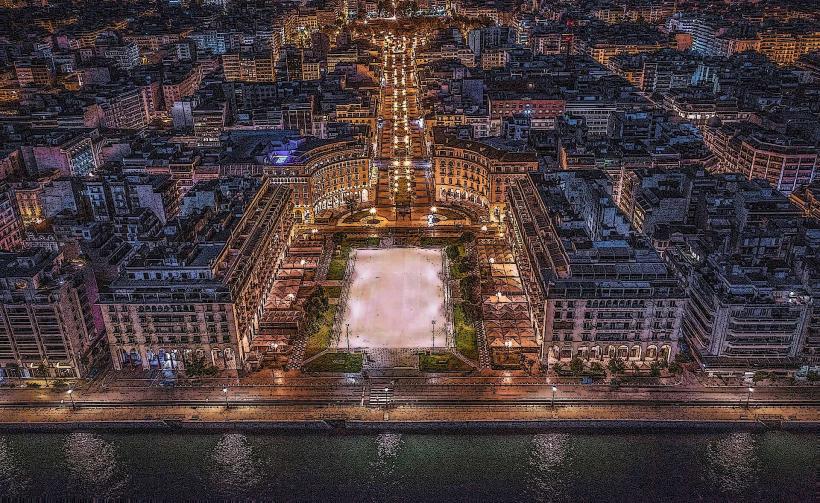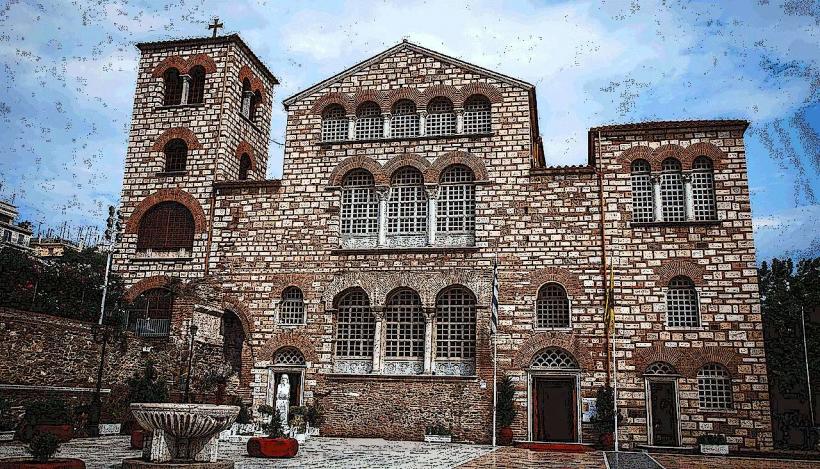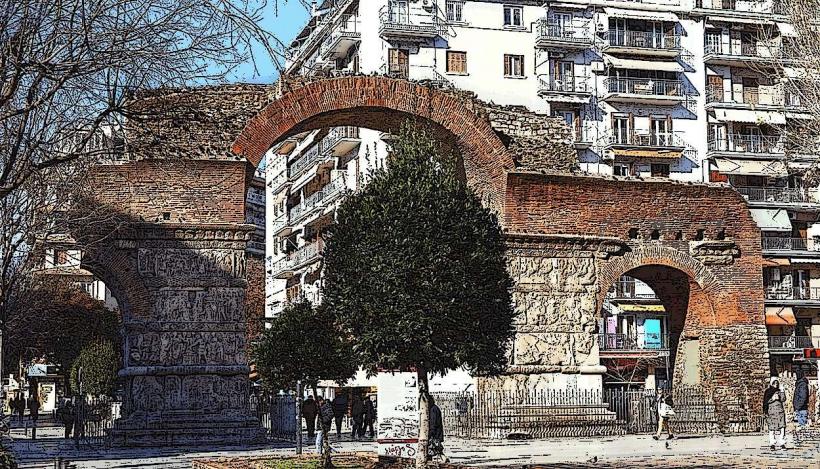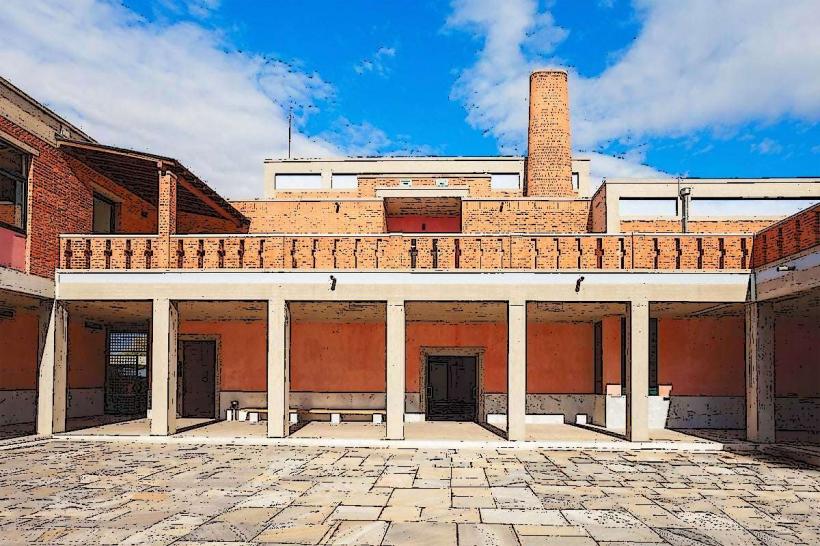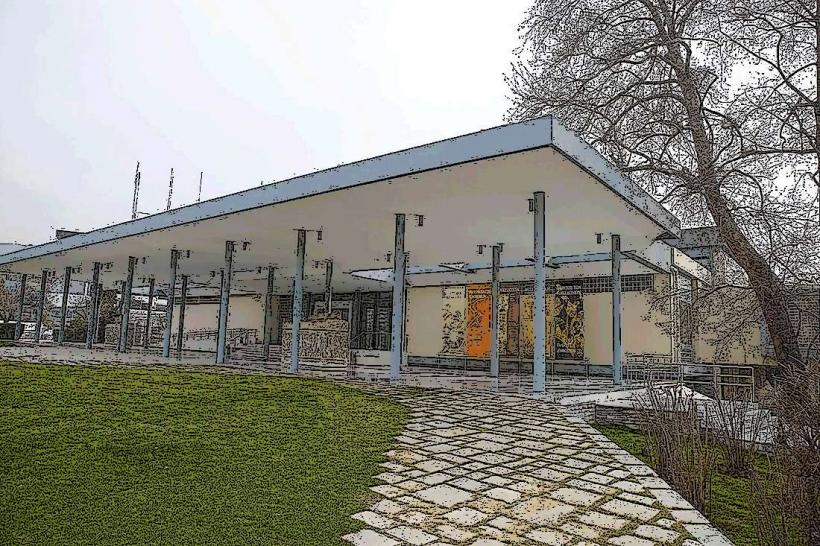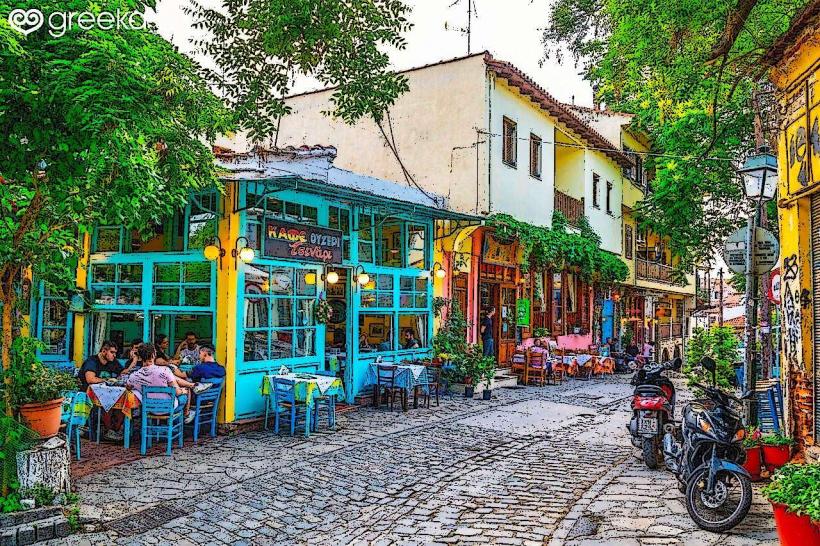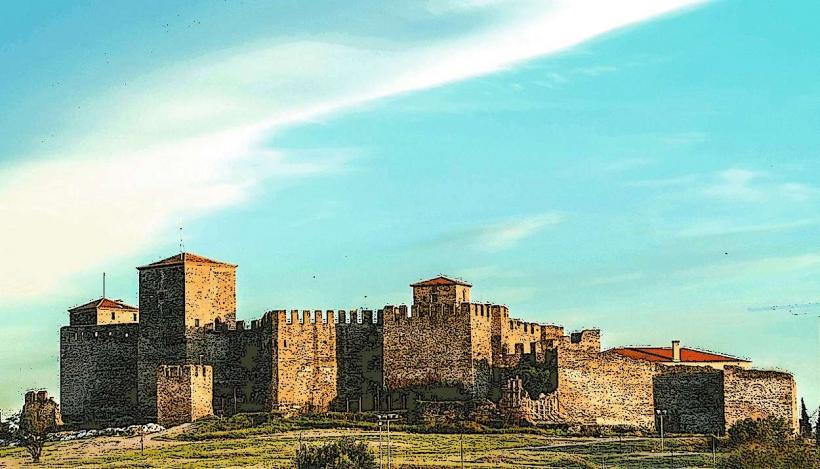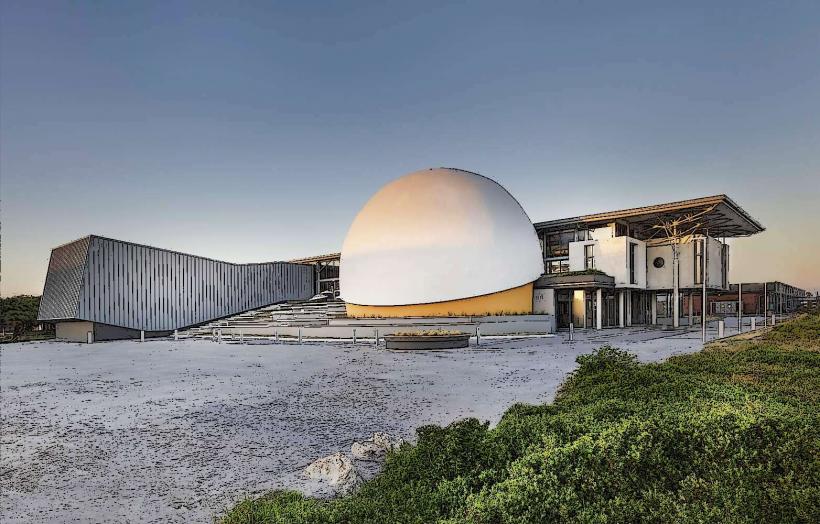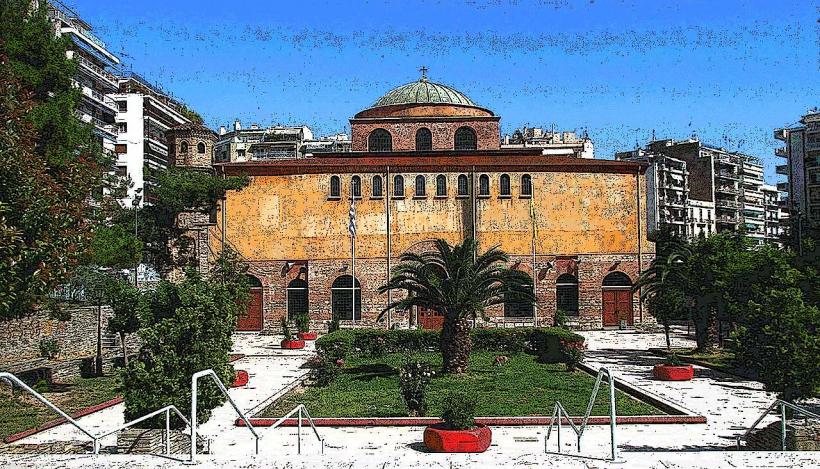Information
Landmark: Church of Panagia ChalkeonCity: Thessaloniki
Country: Greece
Continent: Europe
The Church of Panagia Chalkeon is one of the most important Byzantine-era churches in Thessaloniki, known for its architectural beauty and historical significance. Located near the city's historic center, the church stands as an excellent example of Byzantine architecture and is a testament to the city's rich Christian heritage.
Overview:
- Location: The Church of Panagia Chalkeon is situated near the Modiano Market and the Antoniadis Garden in Thessaloniki, not far from the Vardar (New) railway station. Its location places it within the heart of Thessaloniki's old city.
- Date of Construction: The church was built in the 11th century, around 1028-1030 AD, during the reign of the Byzantine Emperor Romanos III Argyros. It is one of the city's oldest preserved Byzantine churches.
Architecture:
The Church of Panagia Chalkeon is built in the typical Byzantine architectural style, characterized by its use of brick and stone, a central dome, and intricate mosaics. The church is a cross-in-square design, which was popular in Byzantine architecture.
- Exterior: The exterior is relatively simple, with a brickwork facade and large windows, which give the church a modest but elegant appearance. The church has a traditional cruciform (cross) floor plan, with arms extending from a central nave. The central dome is a distinctive feature of the church's architecture, symbolizing the connection between heaven and earth.
- Interior: Inside, the church boasts stunning mosaics that depict scenes from the life of Christ, the Virgin Mary, and various saints. These mosaics are some of the finest examples of Byzantine art in Thessaloniki and offer insight into the religious and artistic culture of the time.
Mosaics and Decorations:
The mosaics in Panagia Chalkeon are among the church's most important features and provide a vivid representation of Byzantine religious art. Some of the notable mosaics include:
- The Pantocrator: The central dome features a mosaic of Christ Pantocrator, a common depiction in Byzantine churches, where Christ is shown as the ruler of the universe.
- Virgin Mary with Child: The church is dedicated to the Virgin Mary (Panagia), and several depictions of Mary with Christ are featured in the mosaics.
- Saints and Biblical Scenes: Various saints are depicted around the church, along with biblical scenes that showcase the artistry of the period.
These mosaics are noted for their vivid colors, the use of gold in the background, and the fine craftsmanship that characterize much of Byzantine art.
Significance and History:
Name of the Church: The name "Chalkeon" is derived from the Chalke Gate (or Copper Gate) in the Byzantine walls of Thessaloniki. The church was likely built in proximity to this gate and was connected to the nearby Chalke Gate's bronze workshops.
Role in the Community: The church historically served as an important place of worship and a center for the local community. It was likely connected to the nearby Chalke Gate, one of the major gates of the Byzantine city, which was an area of political and economic significance.
Preservation: Panagia Chalkeon is one of the few Byzantine churches in Thessaloniki that has remained relatively unaltered over the centuries. It has withstood the city's tumultuous history, including Ottoman occupation and modern urbanization, and is still used as a functioning Greek Orthodox church today.
Visiting the Church of Panagia Chalkeon:
- Hours of Operation: The church is generally open to visitors throughout the week, but it is best to check with local sources for specific visiting hours, especially if you plan to attend a religious service.
- Admission: Entry is usually free, but donations are appreciated to help with the church's maintenance and preservation.
- Accessibility: The church is located in the city center and is easily accessible by foot, bus, or car.
Cultural and Religious Significance:
The Church of Panagia Chalkeon is not only a religious site but also an important cultural monument for Thessaloniki. It offers visitors a glimpse into the Byzantine period and is a valuable part of Thessaloniki's rich Christian heritage. Its historical importance, beautiful mosaics, and role in the city's development make it a significant place to visit for anyone interested in Byzantine art, history, or religion.
Conclusion:
The Church of Panagia Chalkeon stands as one of the gems of Byzantine architecture in Thessaloniki. It combines exquisite art, architecture, and history in a way that is accessible and educational for visitors. Its preservation over the centuries allows it to continue to serve as a symbol of Thessaloniki's cultural and religious continuity, and it remains a peaceful and awe-inspiring place to visit.

